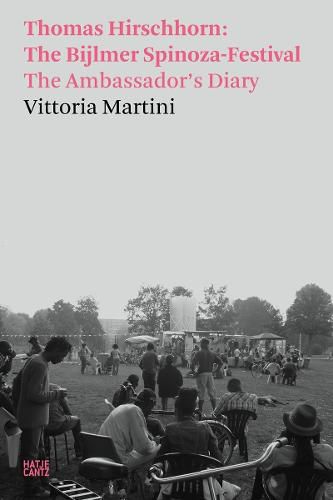Readings Newsletter
Become a Readings Member to make your shopping experience even easier.
Sign in or sign up for free!
You’re not far away from qualifying for FREE standard shipping within Australia
You’ve qualified for FREE standard shipping within Australia
The cart is loading…






The Bijlmer Spinoza-Festival is an artwork, a sculpture, created by Swiss artist Thomas Hirschhorn in a peripheral borough of Amsterdam’s south-east known as the Bijlmer in 2009. This book recounts the event through the eyes of its Ambassador , art historian Vittoria Martini, who was invited by the artist to be an eyewitness to the existence of this precarious work. A term Hirschhorn sees as positive and creative: a means of asserting the importance of the moment and of the place, of asserting the Here and Now to touch eternity and universality. Appreciating the art historian’s presence as a central element of his sculpture, Hirschhorn consciously challenged the certainties of the profession by empowering and activating the role, thus leading Martini to find a new working methodology that she calls precarious art history . Accompanying the readers through her experience of the physical existence of The Bijlmer Spinoza-Festival, Martini’s commentary leads to the profound understanding of how a work that no longer exists physically, can live on in the mind- elsewhere, at some other time-because in the meantime it has become universal.
$9.00 standard shipping within Australia
FREE standard shipping within Australia for orders over $100.00
Express & International shipping calculated at checkout
The Bijlmer Spinoza-Festival is an artwork, a sculpture, created by Swiss artist Thomas Hirschhorn in a peripheral borough of Amsterdam’s south-east known as the Bijlmer in 2009. This book recounts the event through the eyes of its Ambassador , art historian Vittoria Martini, who was invited by the artist to be an eyewitness to the existence of this precarious work. A term Hirschhorn sees as positive and creative: a means of asserting the importance of the moment and of the place, of asserting the Here and Now to touch eternity and universality. Appreciating the art historian’s presence as a central element of his sculpture, Hirschhorn consciously challenged the certainties of the profession by empowering and activating the role, thus leading Martini to find a new working methodology that she calls precarious art history . Accompanying the readers through her experience of the physical existence of The Bijlmer Spinoza-Festival, Martini’s commentary leads to the profound understanding of how a work that no longer exists physically, can live on in the mind- elsewhere, at some other time-because in the meantime it has become universal.